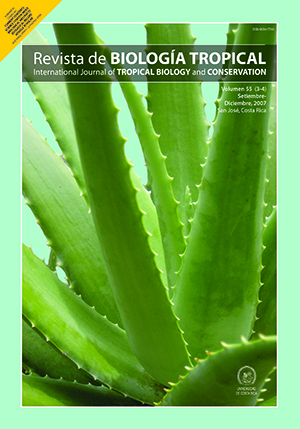Abstract
Arboreal palms have developed a variety of structural root modifications and systems to adapt to the harsh abiotic conditions of tropical rain forests. Stilt roots have been proposed to serve a number of functions including the facilitation of rapid vertical growth to the canopy and enhanced mechanical stability. To examine whether stilt roots provide these functions, we compared stilt root characteristics of the neotropical palm tree Socratea exorrhiza on sloped ( > 20°) and flat locations at two lowland neotropical sites. S. exorrhiza (n=80 trees) did not demonstrate differences in number of roots, vertical stilt root height, root cone circumference, root cone volume, or location of roots as related to slope. However, we found positive relationships between allocation to vertical growth and stilt root architecture including root cone circumference, number of roots, and root cone volume. Accordingly, stilt roots may allow S. exorrhiza to increase height and maintain mechanical stability without having to concurrently invest in increased stem diameter and underground root structure. This strategy likely increases the species ability to rapidly exploit light gaps as compared to non-stilt root palms and may also enhance survival as mature trees approach the theoretical limits of their mechanical stability.Comments

This work is licensed under a Creative Commons Attribution 4.0 International License.
Copyright (c) 2007 Revista de Biología Tropical
Downloads
Download data is not yet available.






